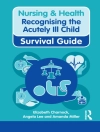Perioperative safety continues to be a global challenge. It is estimated that approximately 200 million surgical procedures are performed annually worldwide, and despite various national and global safety initiatives, perioperative adverse event rates remain alarmingly high. Although hospitals and governmental agencies impose safety standards and certification by organizations such as the Joint Commission, which can address issues of perioperative safety, many hospitals in developed, developing or underdeveloped countries lack the resources or knowhow to decrease perioperative adverse events. There is a great opportunity for improving perioperative safety worldwide especially in underdeveloped or developing countries.
Filling a gap in the literature, this book teaches healthcare providers the basic principles of perioperative safety and efficiency, including checklists and processes to reduce adverse events. Presented here are the basics of intraoperativemonitoring and safety measures to reduce patient adverse events, including wrong site surgery, electric burn injury, deep venous thrombosis, surgical site infection and foreign body retention. Emphasis is given toward developing awareness into measures preventing occupational injuries, such as sharp injury, radiation exposure, laser exposure and smoke hazard. It also addresses dealing and reporting adverse events and disruptive behaviors in the operating rooms as well as new measures for enhanced recovery following surgery and anesthesia.
Principles of Perioperative Safety and Efficiency is a valuable resource and reference for all operating room personnel including surgeons, surgical residents, medical students and nurses.
Содержание
Part I. Perioperative Optimization.- Human Factors and Principles of Patient Safety: The James Reason Model.- Preoperative Testing in the Era of Cost-Containment: Is There a Limit?- Preventing Never Events: Checklist, Timeouts, Debriefings, and Skin Marking.- Reducing Perioperative Medication Errors: How to Build Safer Systems.- Managing the Patient on Antiplatelet, Anticoagulation, Beta Blockers, Angiotensin Converting Enzyme Inhibitors, Angiotensin-Receptors Blockers: The Anesthesia Perspective.- Reducing Surgical Site Infections.- Perioperative Deep Vein Thrombosis Prophylaxis.- Handling Pacemakers and Implantable Cardioverter Defibrillators in the Operating Room.- Traffic, Attire, and Distractions in the OR.- Handling Surgical Specimens to Decrease Errors in Pathology.- Blood Transfusion Safety in the Operating Room.-
Part II. System Design and Improvement.- Detecting and Reporting Errors, Complications and Adverse Events.- Simulation Technical Training to Improve Safety in the OR.-. Teamwork and Communication Simulation to Improve Safety in the OR.- Implementing Crew Resources Management Principles to Improve Perioperative Safety.- Peer Review of Perioperative Adverse Events.- Enhanced Recovery after Surgery Protocols.- Peer Review of Perioperative Adverse Events.- “I Can’t Ventilate!’’ Intraoperative Anesthesia Safety Events and Airway Management.- “Don’t Yell at Me!” Disruptive Behavior in the OR.- “Code Red!” Preventing and Managing Fire and Smoke Hazards in the OR.- “I Got Stuck!” Blood Exposure in the OR—Prevention and Management of Sharp Injuries and Infectious Disease Exposure.- “I’m Missing a Sponge!” New Techniques in the Prevention of Foreign Body Retention.- Principles of Perioperative Safety and Efficiency on the Global Stage.- The Role of the American College of Surgeons in Advancing Perioperative Safety and Efficiency.
Об авторе
Jamal J. Hoballah, MD, MBA, FACS, Department of Surgery, American University of Beirut Medical Center, Beirut, Lebanon
Haytham M. A. Kaafarani, MD, MPH, FACS, Division of Trauma, Emergency Surgery, and Surgical Critical Care, Department of Surgery, Massachusetts General Hospital, Boston, MA, USA
Georgios Tsoulfas, MD, Ph D, FACS, FICS, Department of Transplantation Surgery, Aristotle University School of Medicine, Thessaloniki, Greece












